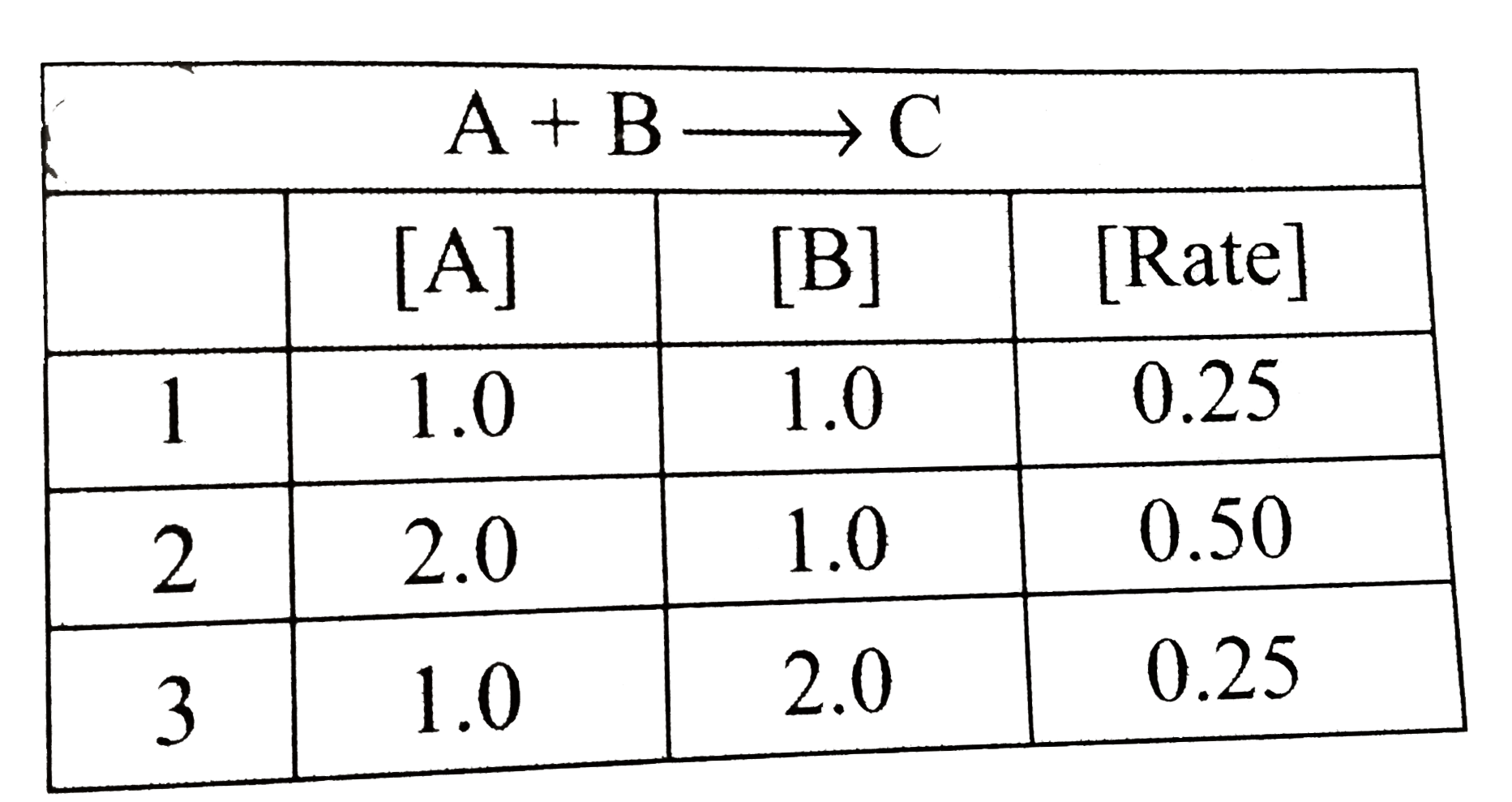The activation energy of the reaction: A+B→ Products is 105.73kJmol−1. At 40∘C, the Products are found at the rate of 0.133molL−1−1min. What will be the rate of formation of Products at 80∘C?
To determine the rate of formation of products at 80°C, we can use the Arrhenius equation and the relationship between the rates at two different temperatures. Here’s a step-by-step solution:
Step 1: Convert Temperatures to Kelvin
First, we need to convert the given temperatures from Celsius to Kelvin.
- T1 = 40°C
T1=40+273=313K
- T2 = 80°C
T2=80+273=353K
Step 2: Write the Rate Relationship
The rate of a reaction is directly proportional to the rate constant (k). Therefore, we can express the relationship between the rates at two different temperatures as:
R2R1=K2K1
Step 3: Use the Arrhenius Equation
The Arrhenius equation relates the rate constants at two different temperatures:
log(K2K1)=−Ea2.303R(1T2−1T1)
Substituting R1 and R2 into the equation gives:
log(R2R1)=−Ea2.303R(1T2−1T1)
Step 4: Substitute Values
Now we can substitute the known values into the equation:
- Ea=105.73kJ/mol=105730J/mol
- R=8.314J/(mol⋅K)
- R1=0.133mol/L/min
Calculating the right side:
log(R20.133)=−1057302.303×8.314(1353−1313)
Calculating the term inside the logarithm:
1. Calculate 1T2−1T1:
1353−1313=313−353353×313=−40110399≈−0.000362
2. Now calculate the entire right-hand side:
−1057302.303×8.314×−0.000362
Calculating the first part:
−10573019.091≈−5536.5
Now multiply by −0.000362:
−5536.5×−0.000362≈2.0
Thus,
log(R20.133)≈2.0
Step 5: Solve for R2
Now, we can solve for R2:
R20.133=102=100
Thus,
R2=100×0.133=13.3mol/L/min
Final Answer
The rate of formation of products at 80°C is approximately 13.3 mol/L/min.
---
First, we need to convert the given temperatures from Celsius to Kelvin.
T1=40+273=313K
T2=80+273=353K
The rate of a reaction is directly proportional to the rate constant (k). Therefore, we can express the relationship between the rates at two different temperatures as:
The Arrhenius equation relates the rate constants at two different temperatures:
Now we can substitute the known values into the equation:
- R=8.314J/(mol⋅K)
- R1=0.133mol/L/min
Now, we can solve for R2:
The rate of formation of products at 80°C is approximately 13.3 mol/L/min.
Topper's Solved these Questions
- BOOK - CENGAGE CHEMISTRY ENGLISHCHAPTER - CHEMICAL KINETICSEXERCISE - Ex 4.1 (Objective)9videos
CHEMICAL KINETICS
- BOOK - CENGAGE CHEMISTRY ENGLISHCHAPTER - CHEMICAL KINETICSEXERCISE - Ex 4.2 (Objective)10videos
CHEMICAL KINETICS
- BOOK - CENGAGE CHEMISTRY ENGLISHCHAPTER - CHEMICAL KINETICSEXERCISE - Archives Subjective23videos
CHEMICAL KINETICS
- BOOK - CENGAGE CHEMISTRY ENGLISHCHAPTER - CARBOXYLIC ACIDS AND THEIR DERIVATIVESEXERCISE - Exercises Archives (Analytical And Descriptive)34videos
CARBOXYLIC ACIDS AND THEIR DERIVATIVES
- BOOK - CENGAGE CHEMISTRY ENGLISHCHAPTER - COORDINATION COMPOUNDSEXERCISE - Archives Subjective18videos
COORDINATION COMPOUNDS
Similar Questions

Rate is expressed in molL−1−1min.
In the above reaction, the order isView SolutionThe activation energy of exothermic reaction A→B is 80 kJ mol−1 . The heat of reaction is 200kJmol−1. The activation energy for the reactionB→a ( in kJ/mol) will be :
View SolutionThe reaction
2NO2→2NO+O2
has an activation energy of 110KJmol−. At 400∘C, the rate constant is 7.8mol−1Ls−1. What is the value of rate constant at 430∘C ?View SolutionThe activation energy for most of the reaction is approximately 50kJmol−1. The rate for temperature coefficient for such reaction will be
View SolutionThe activation energy for the forward reaction X→Y is 60kJmol−1 and ΔH is −20kJmol−1. The activation energy for the reverse reaction is
View SolutionA → products. The concentration of A changes from 0.2 to 0.15 mol L−1 in 10 min. Calculate the average rate.
View SolutionFor a reaction , 2A+D→3C, the rate of appearance of C at time t is 1.2×10−4mol L−1s−1 . Find the rate of reaction.
View SolutionThe activation energy of a reaction is 75.2 kJ mol−1 in the absence of a catalyst and 50.14 kJ mol−1 with a catalyst. How many times will the rate of reaction grow in the presence of the catalyst if the reaction proceeds at 25∘C?[R=8.314JK−1 mole1 ]
View SolutionThe activation energy of a reaction is 75.2 kJ mol−1 in the absence of a catalyst and 50.14 kJ mol−1 with a catalyst. How many times will the rate of reaction grow in the presence of the catalyst if the reaction proceeds at 25∘C?[R=8.314JK−1 mole1 ]
View SolutionThe activation energy of a reaction is 75.2 kJ mol−1 in the absence of a catalyst and 50.14 kJ mol−1 with a catalyst. How many times will the rate of reaction grow in the presence of the catalyst if the reaction proceeds at 25∘C?[R=8.314JK−1 mole1 ]
View Solution

